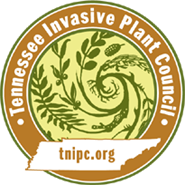Celastrus scandens
Similar to Celastrus orbiculatus Thunb.
American Bittersweet, Celastrus scandens L., a native vine, is similar in appearance to Oriental bittersweet, and anyone surveying for the invasive Asian species should verify identification. American bittersweet has more flowers and fruits per cluster, and these clusters are only found at the ends of stems (terminal panicles) and not in leaf axils (axillary cymes) as typically found in the Oriental species. However, inflorescences are sometimes terminal in male Oriental bittersweet plants. Pollen color of male flowers differ in the two species, yellow for American, white for Oriental. There are usually far fewer seeds - one or none - in each fruit of American bittersweet compared to the non-native species, which may have 5 or more per fruit.
A less reliable difference is the color of the outer covering of the fruit. The fruit of Oriental bittersweet is yellow while American bittersweet fruit is orange. The leaves of American bittersweet are often twice as long as wide, making them larger than Oriental foliage. The best foliage distinction occurs as the plants as leafing out in spring. When they emerge from the buds, American bittersweet leaves are involute - the margins of each leaf are rolled inward toward the center like a scroll. In Oriental bittersweet, the emerging leaves are conduplicate - the two sides of each leaf are folded together against one another. Hybridization between the species obscures all traits, making positive identification very difficult.
The showy fruit clusters are the sole attraction for growing the invasive species. Since the native species features equally attractive fruit clusters, gardeners and craft makers are encouraged to plant American bittersweet. Bees collect pollen, and birds eat the fruit of American bittersweet.
